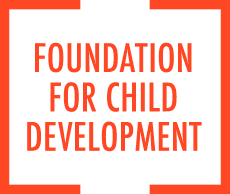https://www.fcd-us.org/the-key-to-nclb-success-getting-it-right-from-the-start/
This paper centers a PreK-3rd reform agenda in the No Child Left Behind Act (NCLB). Policy recommendations include strategies to fund universal PreKindergarten and full-day Kindergarten, alignment of state and national early learning standards in grades PreK-3rd, support for the expansion of a highly qualified PreK-3rd teaching workforce, and extension of learning time options for young children.
EXECUTIVE SUMMARY
Access to quality pre-kindergarten (PK) programs varies widely among and within states. While PK enrollment is growing, large disparities in access and quality threaten to undermine the capacity of early childhood education to close achievement gaps. Research shows that at-risk children can catch up to their non-disadvantaged peers by participating in high quality PK programs that are linked to K-3 structures. However, fewer than half of children ages 3 and 4 engage in some type of early childhood education-before quality is taken into account.
Standards and instruction must be aligned from PK through Grade 3 to maximize the advantages of preschool. Achievement gains from preschool fade out over time if not followed with a high quality, aligned elementary school program. For PK to be most successful, it is best followed with a high quality elementary school education that draws on the teaching and learning that provided in the PK classroom.
The federal government and states currently are involved in expanding access to preschool, but coordination is limited and standards are uneven. The main federal investment in early education is through the Head Start program, but Head Start services reach less than half of eligible children. School districts can also use No Child Left Behind Act (NCLB) Title I program funds for pre-kindergarten programs, but most districts choose to target limited funds on elementary grades. State-funded PK programs operate in 38 states, but there is little alignment of program characteristics or teacher entry standards across states.
RECOMMENDATIONS
1) Dedicate current NCLB Title V funding to a new 2020 Early Education Grant program. The federal government should restructure current Title V block grant funds instead as matching grants to states to expand access to high-quality PK programs and aligned PK teacher and curricular standards with elementary grades.
- Tier One: Fund the development of state PK-16 Coordinating Councils that would create state plans for phasing-in access to universal PK and align standards across the PK-16 continuum.
- Tier Two: Provide matching grants to fund high-quality PK programs equal to up to 25 percent of per child expenditures, exclusively for at-risk children. High quality programs are aligned PK-3 and include a highly qualified early educator guarantee.
- Tier Three: Provide matching grants to fund high-quality PK programs for all children.
2) Require all PK classrooms to have a lead teacher with highly qualified early educator status. Similar to NCLB’s teacher quality requirement, lead PK teachers should hold a bachelor’s degree and evidence competence in early childhood education. A differentiated staffing approach would allow lesser-credentialed teachers to serve as assistant teachers. Over time, Head Start should align their teacher standards with these new requirements. In addition, Title II of the Higher Education Act should be revised to create an incentive for colleges of education to develop integrated PK-3 teacher preparation and certification programs.
3) Increase flexibility for schools districts to use existing NCLB Title I funding for early intervention in grades PK-3, and direct all new NCLB Title I funds to PK-3 initiatives. All Title I schools, not just those high poverty schools with schoolwide programs, should be allowed to use Title I funds for early intervention strategies, not just for those students who have qualified as at-risk. New Title I funding should specifically be dedicated to expanding and improving early education instead of distributed diffusely among a variety of activities. Not only would this save money in the long term by focusing on prevention rather than more costly remediation, it would target Title I program evaluations on a single, research-proven strategy and thus bolster the case for increased future Title I funding.
